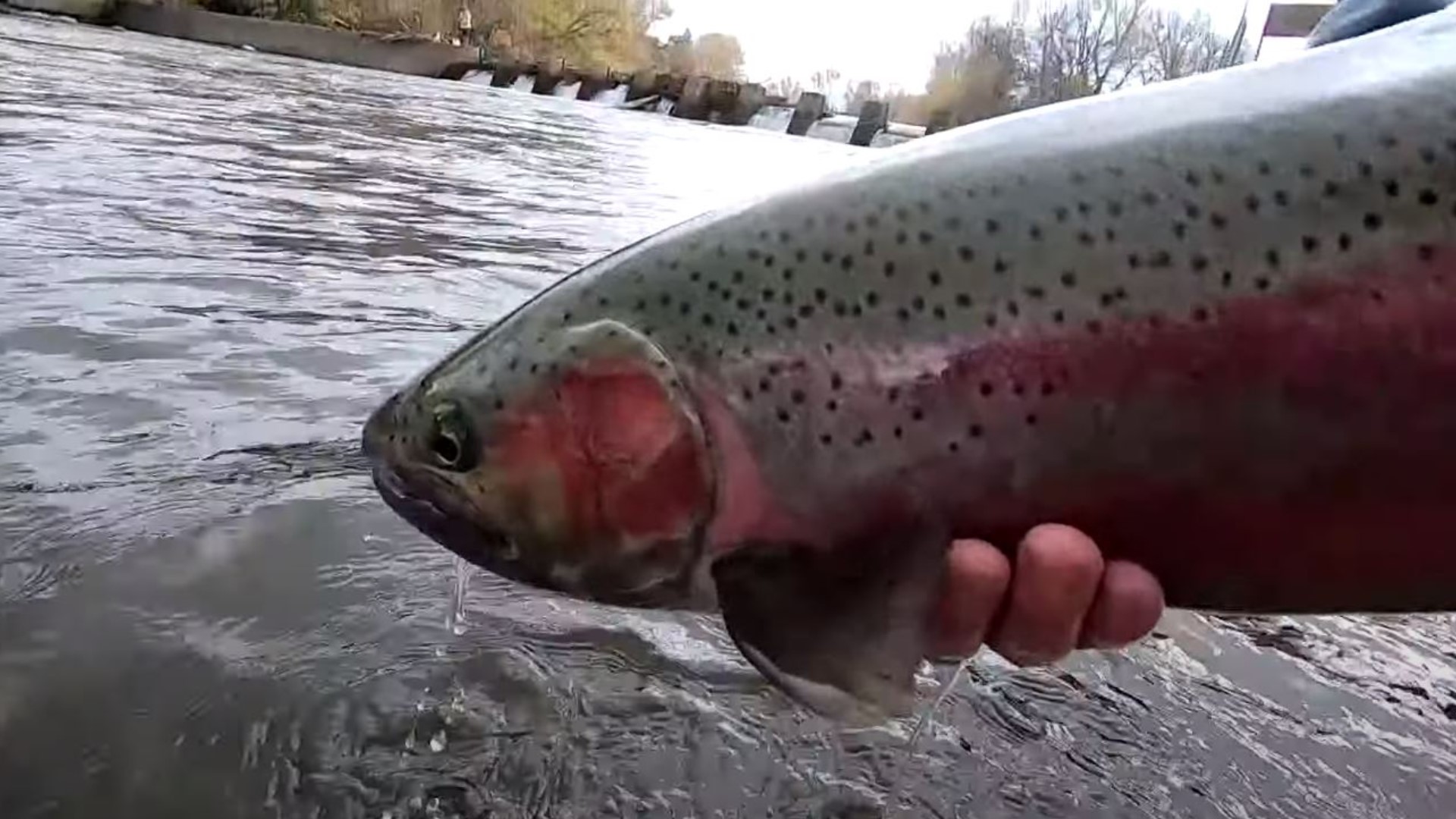SPOKANE, Wash. — Nearly 250,000 young steelhead fish that were set for release into the Snake River later this year are missing from a rearing pond at a hatchery on the river near Palouse Falls, according to state wildlife managers.
The smolts that were discovered missing on Sunday accounted for about 64% of Lyons Ferry Hatchery’s Wallowa stock summer steelhead and less than 8% of the overall hatchery steelhead production in the Snake River basin, the Washington Department of Fish and Wildlife said Thursday in a statement.
A rubber gasket failed, leaving an inch-and-half gap which created a path for the fish to head to the Snake River, Chris Donley, Fish and Wildlife's eastern region fishery manager, told the Spokesman-Review. Staff discovered the failure when they began to lower the water level.
“I don’t believe this was a staff failure,” Donley told reporters. “This was an equipment failure.”
Agency officials in Olympia will decide whether to investigate further, Donley said. No immediate information was provided on the financial impact of the hatchery equipment problem and the loss of the smolts.
Whether or not the 249,770 smolts survived isn’t clear and mostly depends on when they escaped, Donley said.
It’s possible that if they escaped the holding pen when water was being lowered Sunday and may survive, leading to a higher-than-normal number of returning steelhead near Lyons Ferry.
Normally, the fish and wildlife department releases 60,000 steelhead smolts at Lyons Ferry. However, if they escaped earlier in the winter or during the late fall, many were likely eaten by walleye or other predators.
A smolt is a juvenile salmon or steelhead fish, between 12 and 15 months old. Steelhead and salmon smolts are reared and released in various areas of the state. The agency operates 80 hatcheries across Washington and raises about 5 million steelhead smolts annually.
On Monday and Tuesday, hatchery staff transported the remaining 135,230 smolts from Lyons Ferry to the Cottonwood Acclimation Pond, on the Grande Ronde River near the Oregon border.
These fish will be released into the Grande Ronde River in April. Most will spend one year in the ocean and return to the Columbia basin as adult steelhead in 2023.
Last year was a bad year for steelhead returns on the Snake River. The dismal returns, of both wild and hatchery-reared fish, are attributed to bad ocean conditions, dams and warm summertime water temperatures, although ocean conditions seem to be improving, giving managers some hope for a rebound.
Advocates for dam removal and habitat restoration on the Snake River pointed to the hatchery failure as an example of why wild fish — and the habitat they depend upon — are preferable to fish raised in hatcheries.
“We want to see natural systems work because they’re more resilient,” said Gregory Fitz, the communications manager for the Wild Steelhead Coalition group that works toward increasing the return of wild steelhead. “Natural systems function better in the long run. You’re not waiting for parts to fail.”
Watch more Local News:
See the latest news from around the Treasure Valley and the Gem State in our YouTube playlist:

